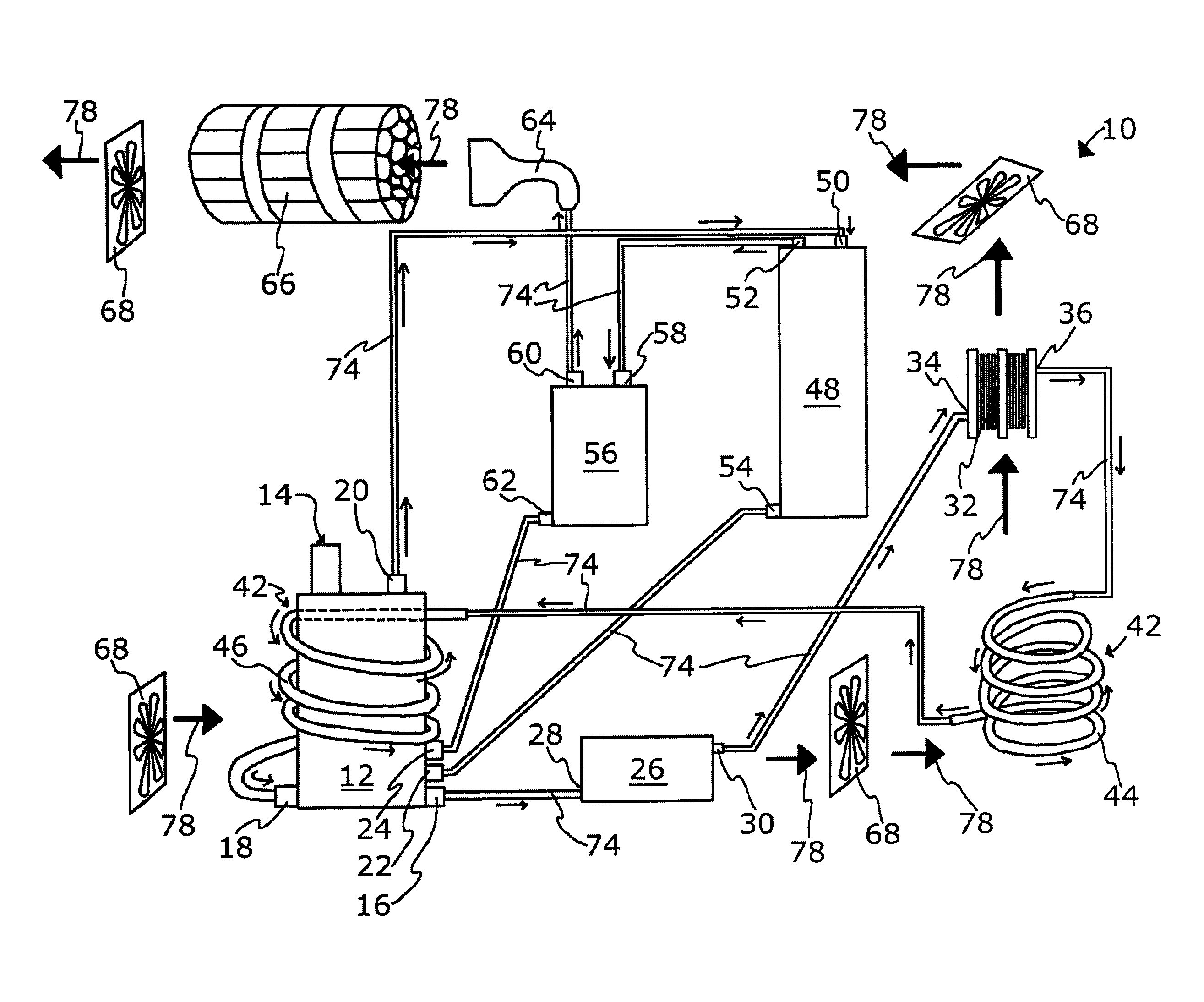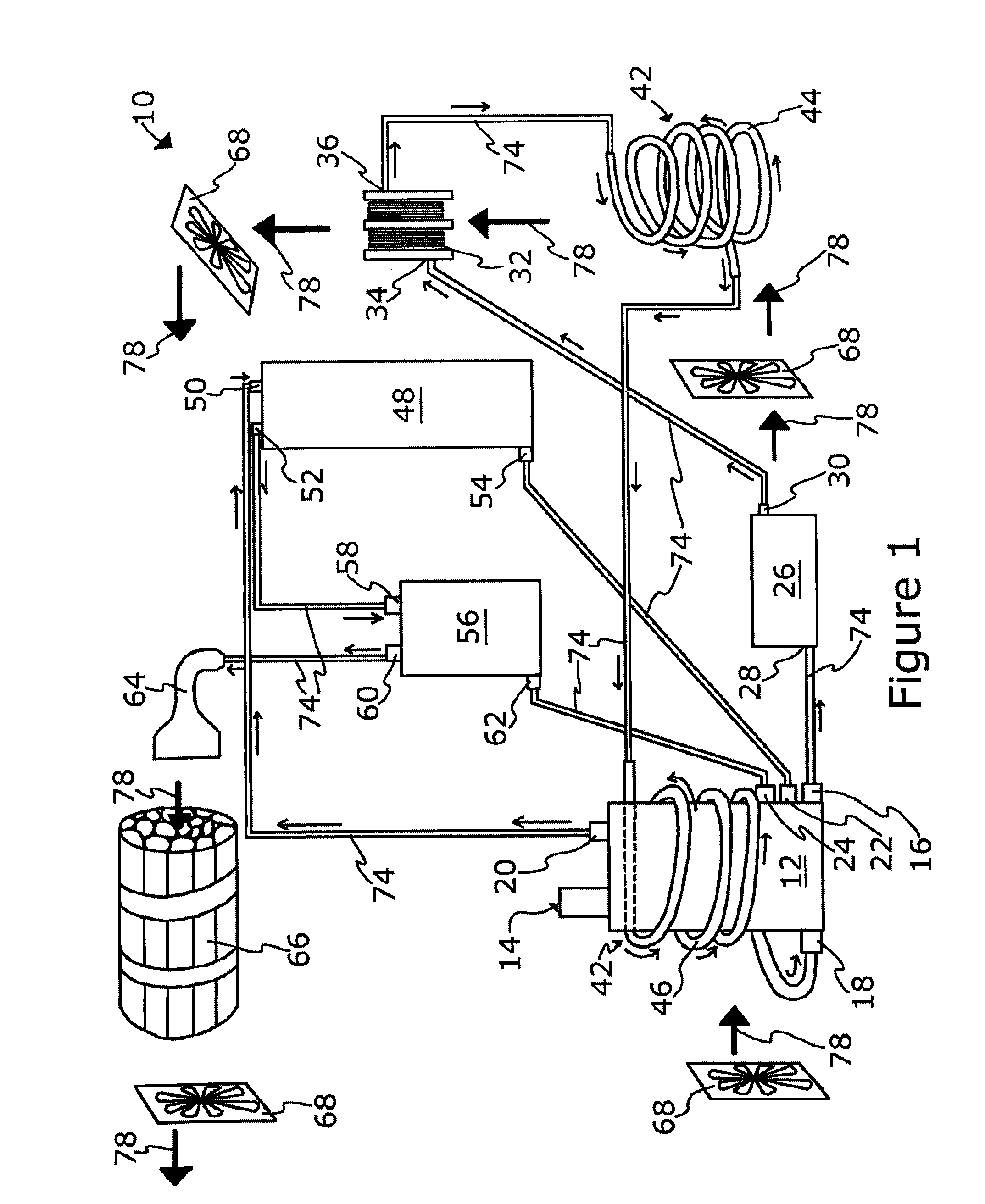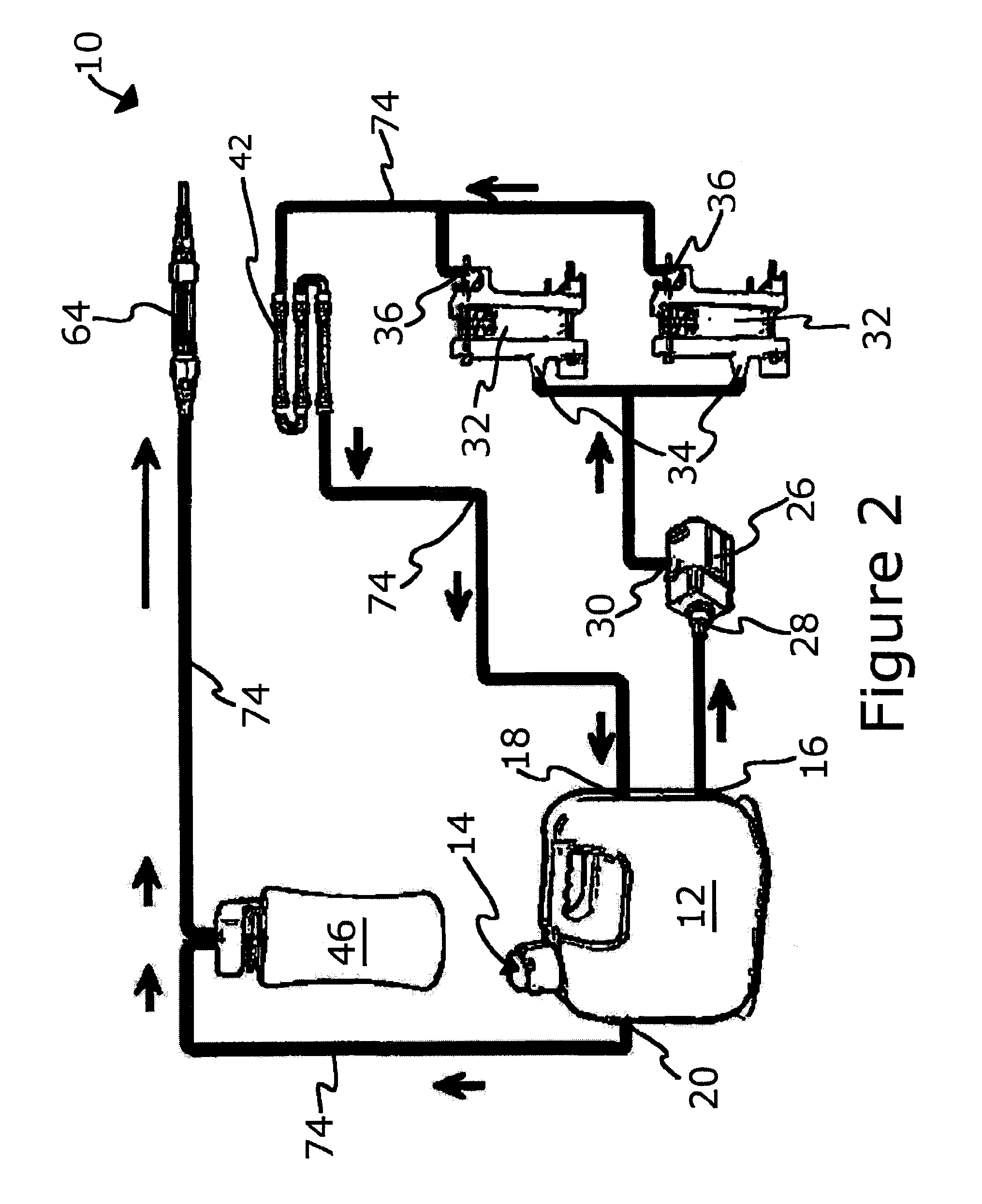Home heating system utilizing electrolysis of water
a technology of electrolysis and home heating, applied in the field of heating systems, can solve the problems of relatively large heat for the amount of energy used, relatively little energy used by the heating system to perform electrolysis, etc., and achieve the effect of keeping the manufacturing cost of the system low
- Summary
- Abstract
- Description
- Claims
- Application Information
AI Technical Summary
Benefits of technology
Problems solved by technology
Method used
Image
Examples
Embodiment Construction
[0023]While the system is susceptible of various modifications and alternative constructions, certain illustrated embodiments thereof have been shown in the drawings and will be described below in detail. It should be understood, however, that there is no intention to limit the system to the specific form disclosed. On the contrary, the system is to cover all modifications, alternative constructions, and equivalents falling within the spirit and scope of the invention as defined in the claims.
[0024]In the following description and in the figures, like elements are identified with like reference numerals. The use of “e.g.,”“etc.,” and “or” indicates non-exclusive alternatives without limitation unless otherwise noted. The use of “including” means “including, but not limited to,” unless otherwise noted.
[0025]As shown in the FIGS. 1 through 15, disclosed is a heating system 10 utilizing electrolysis of water for heating a space. According to the depicted embodiments, the heating system...
PUM
 Login to View More
Login to View More Abstract
Description
Claims
Application Information
 Login to View More
Login to View More - R&D
- Intellectual Property
- Life Sciences
- Materials
- Tech Scout
- Unparalleled Data Quality
- Higher Quality Content
- 60% Fewer Hallucinations
Browse by: Latest US Patents, China's latest patents, Technical Efficacy Thesaurus, Application Domain, Technology Topic, Popular Technical Reports.
© 2025 PatSnap. All rights reserved.Legal|Privacy policy|Modern Slavery Act Transparency Statement|Sitemap|About US| Contact US: help@patsnap.com



